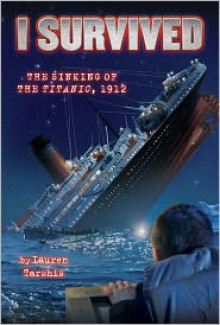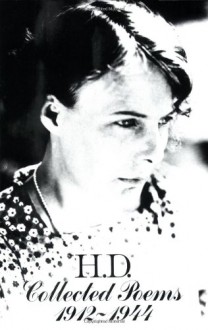
Opinia opublikowana na moim blogu:
https://literackiepodrozebooki.blogspot.com/2024/03/14-april-1912-titanic.html


This is just one of the many books in this series. Each book is in the point of view of a boy who survives each historical event that has ever taken place. It detailed what happened in an age appropriate way which captures all students attention and keeps them wanting to read more.
My CT from last semester read these books to her class every day. I would love to have the collection and read them to my class and discuss each historical event before or after we read. I love how it is told by a little boy to help get younger children to understand what happened.
Lexile: 590L
 The poems from Sea Garden were accessible enough, but quite soon, in the selection from The God, my smart-phone was commissioned to check the Greek references. Euridyce in particular is only intelligible if the relevant myth is familiar, but once explained the poem stands out as clever and touching. By the time I reached Translations, in addition to searching out internet resources, I had excavated an elderly copy of the Oxford Book of Greek Verse in Translation (only recently it nearly left home for Oxfam) from the dustier part of my bookshelves, browsing both books in tandem.
The poems from Sea Garden were accessible enough, but quite soon, in the selection from The God, my smart-phone was commissioned to check the Greek references. Euridyce in particular is only intelligible if the relevant myth is familiar, but once explained the poem stands out as clever and touching. By the time I reached Translations, in addition to searching out internet resources, I had excavated an elderly copy of the Oxford Book of Greek Verse in Translation (only recently it nearly left home for Oxfam) from the dustier part of my bookshelves, browsing both books in tandem.  The poems from Sea Garden were accessible enough, but quite soon, in the selection from The God, my smart-phone was commissioned to check the Greek references. Euridyce in particular is only intelligible if the relevant myth is familiar, but once explained the poem stands out as clever and touching. By the time I reached Translations, in addition to searching out internet resources, I had excavated an elderly copy of the Oxford Book of Greek Verse in Translation (only recently it nearly left home for Oxfam) from the dustier part of my bookshelves, browsing both books in tandem.
The poems from Sea Garden were accessible enough, but quite soon, in the selection from The God, my smart-phone was commissioned to check the Greek references. Euridyce in particular is only intelligible if the relevant myth is familiar, but once explained the poem stands out as clever and touching. By the time I reached Translations, in addition to searching out internet resources, I had excavated an elderly copy of the Oxford Book of Greek Verse in Translation (only recently it nearly left home for Oxfam) from the dustier part of my bookshelves, browsing both books in tandem. 
Beschreibung
1912: England.
Connie Gifford lebt gemeinsam mit ihrem Vater, den sie einfach nur Gifford nennt, zurückgezogen in einer kleinen Ortschaft in Sussex. Mit ihrem Geschäft als Tierpräperatoren können sie sich gerade so durchschlagen. Als Connie eines Tages eine tote Frau in den Sümpfen hinter ihrem Haus findet und sie Bekanntschaft mit Harry Doyle macht, kehren nach und nach verschwunden geglaubte Erinnerungsfetzen aus ihrer Kindheit zurück.
Seit einem Unfall kann sich Connie nicht mehr an ihre Vergangenheit erinnern und ihr Vater weigert sich eisern ihr von den Vorfällen zu erzählen. Doch nun wird Connie von den schrecklichen Ereignissen eingeholt und muss nach dem Verschwinden ihres Vaters auch noch um sein Leben bangen.
Meine Meinung
Das mysteriöse in Grau- und Schwarztönen gehaltene Cover, ja man könnte es sogar ein Gothic-Cover nennen, zeigt eine Frau mit einem Rabenvogel. Gleich auf den ersten Blick hat mich der neue Roman „Der Kreis der Rabenvögel“ von Kate Mosse angesprochen. Vor allem da das wunderschöne Cover die Verheißung auf eine gruselige und spannende Geschichte in mir erwachen ließ und ich solche Geschichten sehr liebe!
„Der Kreis der Rabenvögel“ ist wunderbar mystisch und eignet sich super für gruselige Lesestunden. Außerdem bringt der Roman einen bezaubernden Retro-Charme mit sich, der den Leser bis zum Beginn des 20. Jahrhunderts reisen lässt. Droschken füllen die Straßen und Bedienstete erledigen die anfallenden Tätigkeiten im Haushalt. Die Charaktere wirken vor diesem Hintergrund alles andere als angestaubt, denn Connie ist eine starke Frau die sich um ihren Vater sorgt und den Betrieb am laufen hält.
Sehr spannend finde ich das Geheimnis das sich von Beginn an um die Hauptprotagonistin Connie Gifford rankt, und dessen Auflösung man erst nach und nach auf die Spur kommt. Mir hat es auf jeden Fall eine große Freude bereitet die „Miss Marple“ zu spielen und kräftig mitzurätseln.
Dann ist da noch der Künstler Harry Doyle, der eher durch Zufall mit Connie Bekanntschaft macht. Schnell wird klar, dass es zwischen den vermeintlich Unbekannten zumindest eine Verbindung der Väter geben muss. Gemeinsam stellen sich Connie und Harry der Vergangenheit.
Kate Mosse hat meine Erwartungen an das Buch auf jeden Fall erfüllt. Es wird eine mitreisende und sehr mysteriöse Geschichte vor einem tollem Setting mit einzigartigen Charakteren geboten. Zwischen den Kapiteln stößt man auf Auszüge aus einem Werk der Kunst der Taxidermie, welche der Geschichte zusätzlich Authentizität verleihen.
Über die Autorin
Kate Mosse, eine der Initiatorinnen des Baileys Women’s Prize For Fiction (vormals Orange Prize), arbeitet für Rundfunk und Fernsehen. Für BBC Four moderiert sie eine wöchentliche Sendung, in der Autoren und ihre Bücher vorgestellt werden. Kate Mosse hat Romane und Sachbücher geschrieben, vor ihrer Arbeit für Rundfunk und Fernsehen war sie stellvertretende Intendantin des Chichester Festival Theatre in West Sussex. Sie ist Mitglied der Royal Society of Arts. Mit ihrem Mann und ihren beiden Kindern lebt sie in West Sussex und in Carcassonne. Ihr erster Roman „Das verlorene Labyrinth“ wurde ein Weltbestseller. Es folgten die Romane „Die achte Karte“, „Wintergeister“ und „Die Frauen von Carcassonne“. (Quelle: Droemer Knaur Verlag)
Fazit
Kate Mosse versteht es eine starke Frauenfigur vor dem schaurigen Setting des 20. Jahrhundert Englands in Szene zu setzen. Spannungs- und Gruselmomente garantiert!